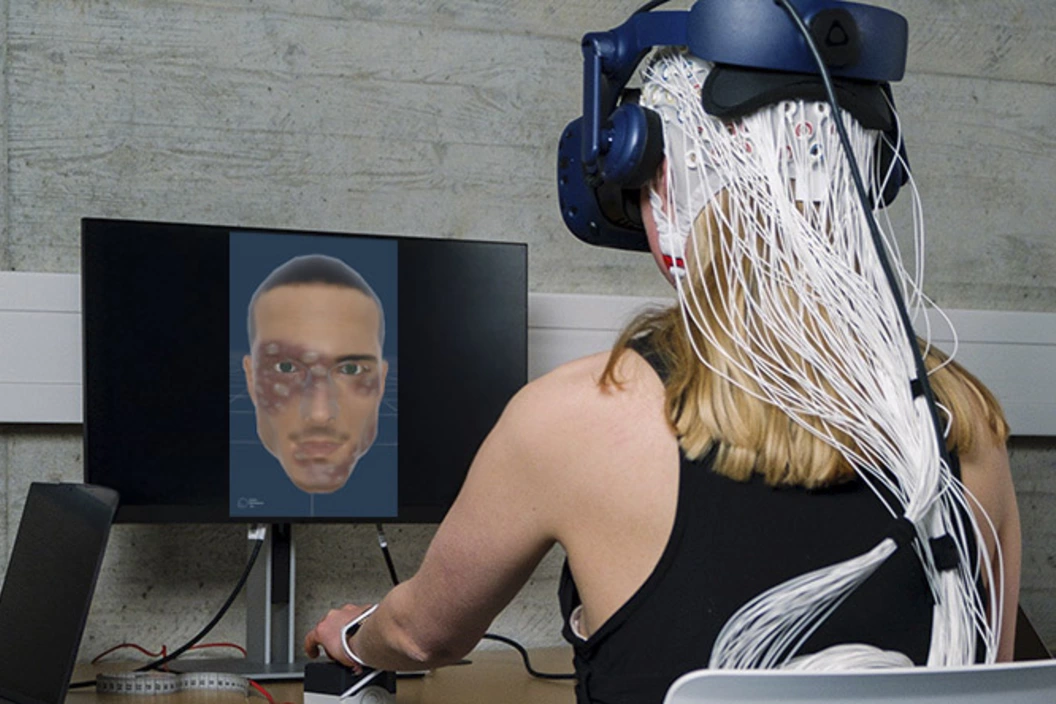When facing a fully virtual infection on a screen, the brain of a healthy individual triggers an immune response similar to that of an infected person. This discovery was made by a multidisciplinary research team from the CHUV and the University of Geneva (UNIGE).
Led by Prof. Andrea Serino, director of the MySpace Lab (University Neurorehabilitation Service at the CHUV and the Institution of Lavigny) and associate professor at the UNIL Faculty of Biology and Medicine (FBM), and Prof. Camilla Jandus, lab leader in the Department of Pathology and Immunology and the Geneva Centre for Inflammation Research at the UNIGE Faculty of Medicine and member of the Ludwig Institute for Cancer Research, the team has shown that the mere fact of being exposed to a sick avatar in a virtual reality environment triggers a measurable immune response in humans.
This research, conducted by Dr. Sara Trabanelli (UNIGE) and Dr. Michel Akselrod (CHUV-UNIL) and published in Nature Neuroscience, unravels a previously unknown dialogue between the brain and the immune system, whereby a defence response is initiated not by a real pathogen, but by the brain's anticipation of the threat of an infection.
A new communication pathway between the brain and the immune system
Virtually stimulating the brain could therefore make it send signals to the immune system, instructing it to mobilise and defend itself against a pathogen.
Various experiments were conducted by the CHUV and UNIGE team. About 250 participants were presented with human avatars in virtual reality, some of which displayed visual signs of infection, while others had neutral or frightened expressions. For 15 minutes, they observed the face of a person approaching them on a screen, displaying signs of a classic infection such as chickenpox. Their reactions were monitored using electroencephalograms, MRI scans, and blood tests. The results showed that the mere approach of an infected avatar in virtual reality was sufficient to activate areas of the brain associated with threat detection and immune regulation. Even more surprisingly, immune markers typical of a response to a real infection were present in the participants' blood.
The brain anticipates infection hazards
To compare this response with that of real immune activation, another group of participants received a vaccine. The immune responses observed in both cases — virtual exposure and vaccination — showed striking similarities. For instance, when comparing a person vaccinated against influenza with another exposed to virtual reality, several immune response biomarkers measured in the blood were similar in both real and virtual infection.
This study reveals the brain's ability to anticipate an infectious threat and trigger a defensive response even before a real pathogen is present. It paves the way for a renewed understanding of the interactions between the central nervous system and the immune system.
Promising therapeutic avenues
These discoveries offer new perspectives on the influence of the brain on the immune system and open avenues for research into placebo effects, psychosomatic disorders and the modulation of the immune response. Ultimately, virtual reality could become a therapeutic tool, enhancing or inhibiting certain immune responses, supporting the effectiveness of vaccines, or helping to desensitise people with allergies.

